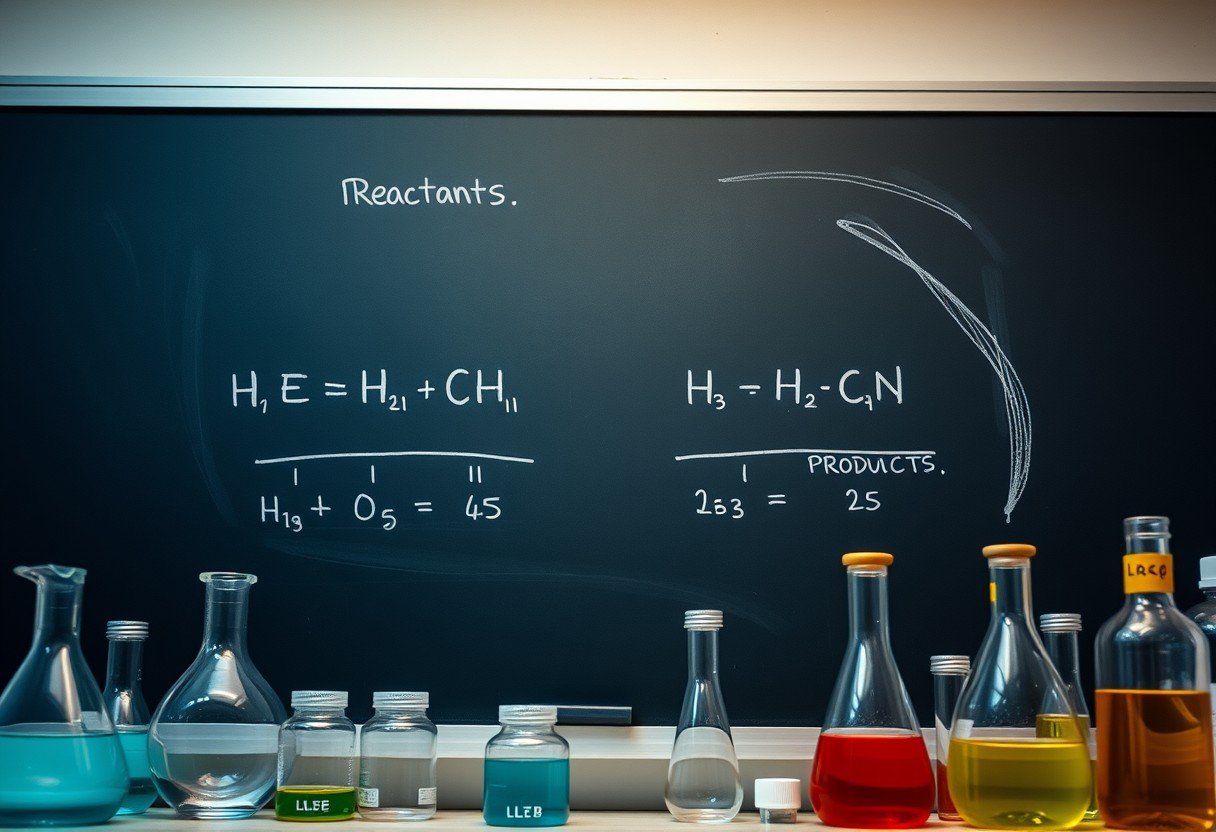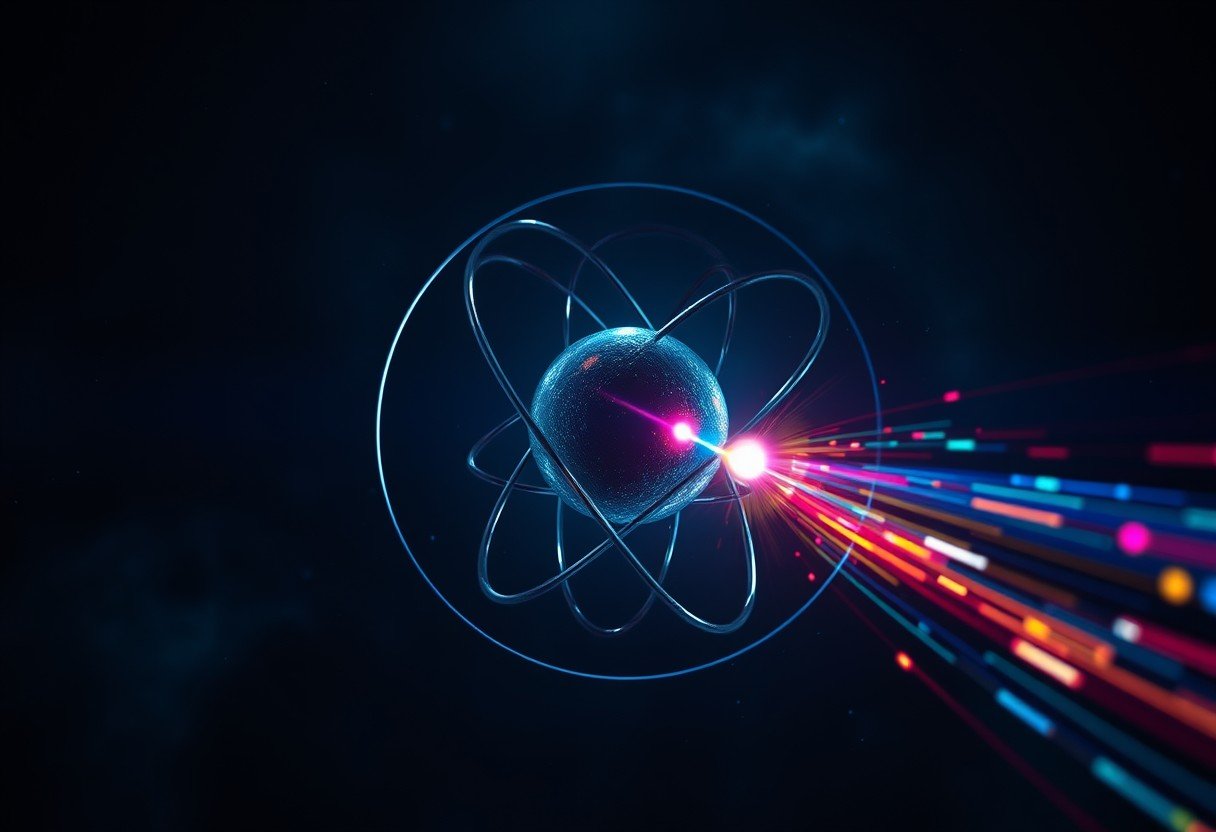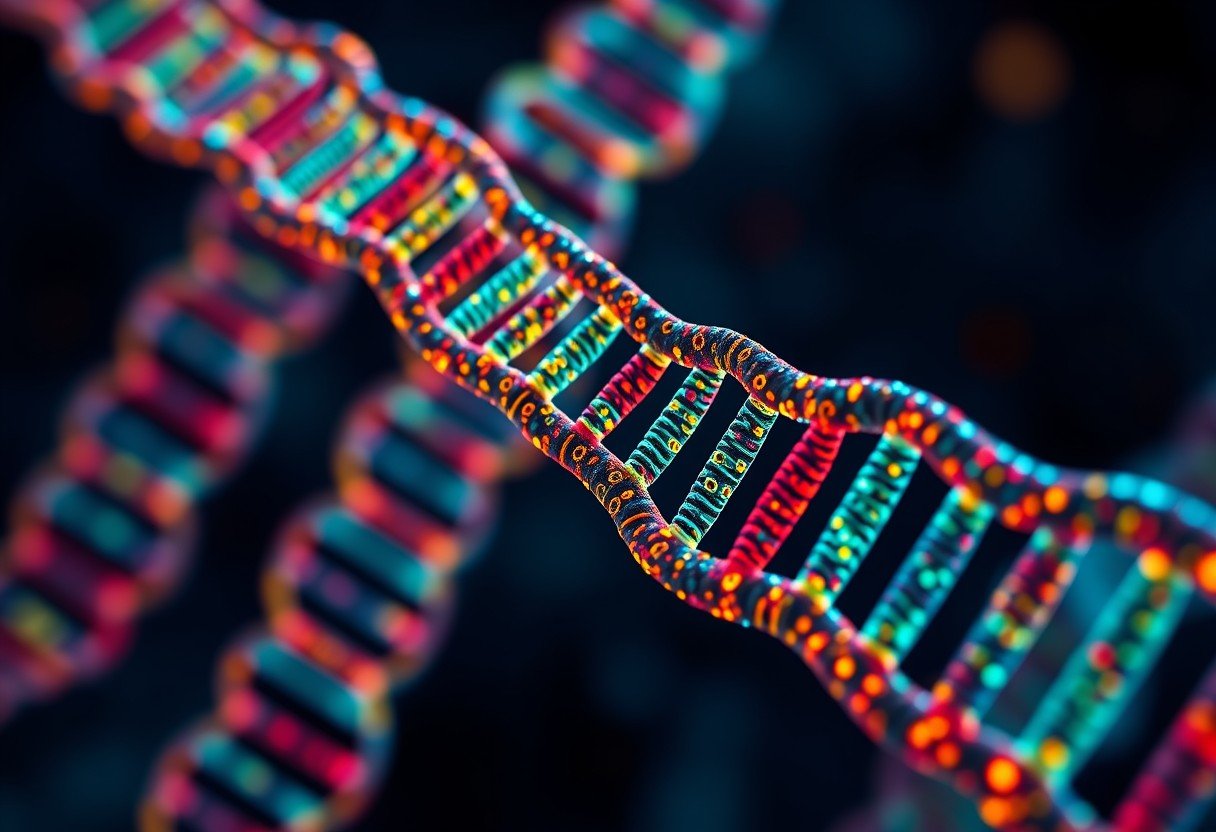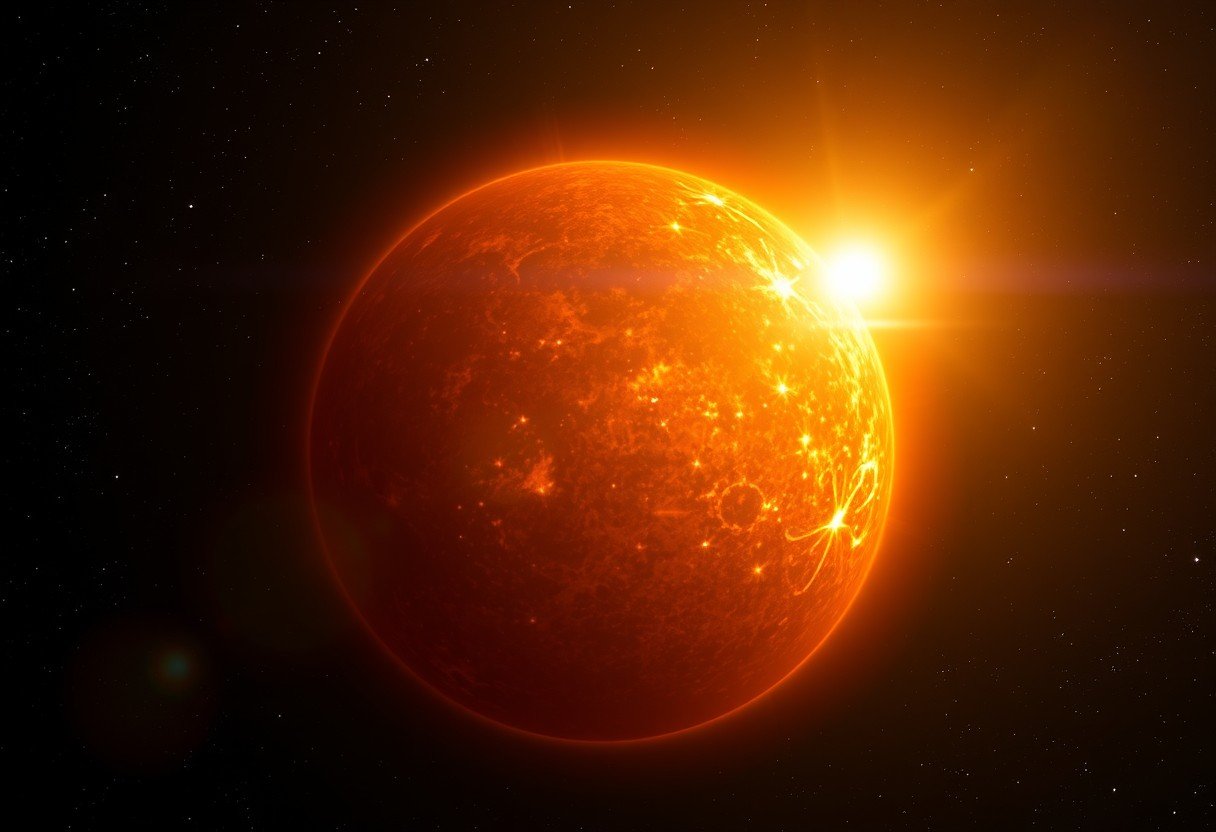When you look at a chemical equation, it’s like a recipe for a reaction. For the recipe to work, certain ingredients must be accounted for on both sides. The most important rule is that the number of atoms for each element and the total mass must be the same on the reactant and product sides. This ensures the equation follows the fundamental law of conservation of mass, meaning matter is never created or destroyed, only rearranged.
The Core Principle: Conservation of Mass
The foundation of balancing any chemical equation is the Law of Conservation of Mass. This scientific law states that in a closed system, mass is neither created nor destroyed by chemical reactions or physical transformations. Think of it like building with LEGO bricks; you can take apart a car and build a house, but you’ll still have the same number of individual bricks.
This principle was famously demonstrated by the 18th-century chemist Antoine Lavoisier. Through very careful experiments, he showed that the total mass of the substances before a reaction (reactants) was always equal to the total mass of the new substances formed (products). This discovery revolutionized chemistry by proving that atoms are simply rearranged during a reaction.
So, when we balance a chemical equation, we are simply doing the accounting to make sure this law is obeyed. Every atom that starts in a reactant molecule must be found somewhere in a product molecule.
Counting Atoms: The First Quantity to Balance
The most direct application of the conservation of mass is ensuring that the number of atoms of each element is identical on both sides of the equation. If you start with 10 hydrogen atoms on the left side, you must end with 10 hydrogen atoms on the right side, even if they are in different molecules.
An unbalanced equation is not just a mistake; it’s a statement that defies the laws of physics. It implies that atoms have either vanished into thin air or appeared from nowhere, which we know is impossible in a standard chemical reaction.
Balancing the atom count is the primary task when writing a correct chemical equation. This is done by adjusting coefficients, the numbers placed in front of chemical formulas, which change the number of molecules involved in the reaction.
How to Balance a Chemical Equation Correctly
Balancing an equation is a systematic process that ensures all atoms are accounted for. While it can seem tricky at first, following a few steps makes it much more manageable. It is crucial to remember that you can only change the coefficients, not the small subscript numbers within a chemical formula, as that would change the identity of the substance itself.
Here are the basic steps to follow:
- Write down the correct chemical formulas for all reactants and products. This is the unbalanced “skeleton” equation.
- Create an inventory by counting the number of atoms of each element on both the reactant side and the product side.
- Adjust the coefficients in front of the chemical formulas to make the number of atoms for each element equal on both sides. It’s often easiest to start with the most complex molecule or an element that appears in only one reactant and one product.
- Recount the atoms to double-check your work and ensure everything is balanced.
A common mistake is changing a subscript. For example, changing H₂O to H₂O₂ to balance oxygen atoms is incorrect because you’ve changed water into hydrogen peroxide, a completely different chemical with different properties.
Beyond Atoms: Conserving Electric Charge
While balancing atoms is essential, it’s not the only quantity that must be conserved. In reactions involving ions (charged atoms or molecules), the total electric charge must also be the same on both sides of the equation. This is the principle of charge conservation.
For example, if the reactants have a total charge of +2, the products must also have a total charge of +2. You can’t create or destroy net electric charge during a chemical reaction. This is especially important when working with oxidation-reduction (redox) reactions, where electrons are transferred between substances.
Failing to balance the charge results in an incorrect equation, just like failing to balance the atoms. The net charge on the reactant side must equal the net charge on the product side for the equation to be valid.
What about Moles, Volume, and Mass?
It’s important to be clear about which quantities must be equal and which ones might change. The total mass must always be conserved, but this doesn’t mean other quantities like the number of molecules or the volume will be the same.
The coefficients in a balanced equation represent the ratio of moles, not the absolute number of moles. For example, in the reaction 2H₂ + O₂ → 2H₂O, three moles of reactants (2 moles of H₂ and 1 mole of O₂) produce two moles of product. Here, the number of moles changes.
This table summarizes what is conserved versus what might change:
| Quantity | Must it Be the Same on Both Sides? |
|---|---|
| Total Mass | Yes, always. |
| Number of Atoms of Each Element | Yes, always. |
| Total Electric Charge | Yes, always. |
| Total Number of Moles | No, can change. |
| Total Volume (of gases) | No, can change. |
Understanding this distinction is key to performing correct stoichiometric calculations, which allow chemists to predict the amount of product that can be formed from a given amount of reactant.
Why Coefficients are so Important
The coefficients in a balanced chemical equation are more than just numbers; they are the recipe’s instructions. They tell you the proportional amounts of each substance involved. This ratio, known as stoichiometry, is critical for real-world applications.
In industrial settings, such as manufacturing pharmaceuticals or fertilizers, using the correct stoichiometric ratios ensures maximum efficiency. Using incorrect ratios can lead to wasted materials, lower product yield, and even dangerous side reactions.
By understanding and correctly using coefficients, scientists and engineers can control chemical reactions to optimize production, reduce waste, and ensure the safety and sustainability of chemical processes. It all comes back to the simple act of making sure the equation is properly balanced.
Frequently Asked Questions about Chemical Equations
What two quantities must always be conserved in a chemical reaction?
The two fundamental quantities that must always be conserved are mass and charge. The law of conservation of mass dictates that the total mass of reactants equals the total mass of products, and the conservation of charge requires the net electric charge to be the same on both sides.
Can the number of molecules be different on each side of a balanced equation?
Yes, the total number of molecules can change. The coefficients balance the atoms, not the molecules. For instance, in the formation of ammonia (N₂ + 3H₂ → 2NH₃), four reactant molecules combine to form two product molecules.
Why can’t you change the subscripts to balance an equation?
Changing the subscripts in a chemical formula alters the identity of the substance. For example, H₂O is water, but if you change the subscript to make it H₂O₂, it becomes hydrogen peroxide. You must preserve the chemical identity of all substances in the reaction.
Does balancing an equation mean the volume is the same on both sides?
Not necessarily, especially for reactions involving gases. According to Avogadro’s law, the volume of a gas is proportional to the number of moles. Since the total number of moles can change during a reaction, the total volume can also change.
Who is credited with discovering the Law of Conservation of Mass?
The French chemist Antoine Lavoisier is credited with establishing the Law of Conservation of Mass in the late 18th century. His meticulous measurements were crucial in transforming chemistry from a qualitative to a quantitative science.









Leave a Comment